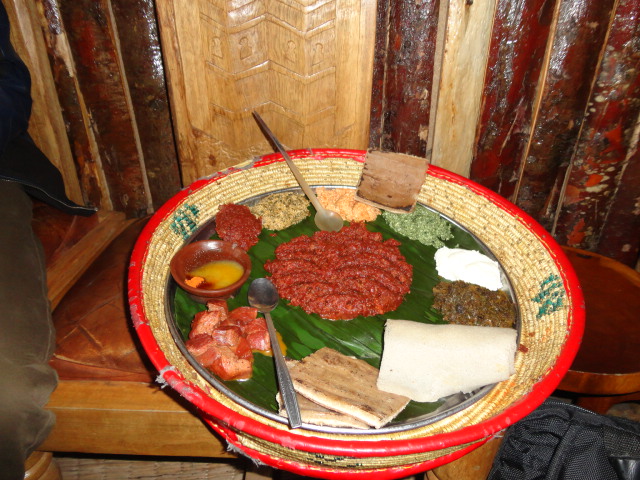Ethiopia is a country that should be on your bucket list for many reasons. This African nation located in the east region of the continent offers the visitor an immersive journey to its history, amazing culture, tradition, and natural beauties. However, there is one thing that strikes many Western foreign visitors who walk through the streets of Addis Ababa for their first time— the practice of eating raw meat in Ethiopia.
Eating raw meat in Ethiopia has been associated with cultural practices. Ox is the most common meat consumed, but for some Ethiopians, eating raw goat— a more expensive sort of meat— is also very popular.
In Addis Ababa, a city of nearly 3.5 million, raw meat lovers flock to butcher shops that serve raw meat any time of day.
“But their most preferred time is lunch,” Tsegaye Ayenew, who owns a butchery in Piazza, told Anadolu Agency.
Meat plays pivotal and vital roles in special occasions, and its cultural symbolic weight is marketed greater than any other food. The processing and cooking of poultry is a gender based duty and has sociocultural roles. Ethiopians are dependent on limited types of animals for meat due to the taboo associated culturally.
“On holidays, they come all the day; it will be time for a market bonanza. We sell a kilogram of raw beef for $6 while some may sell for $10,” Ayenew said.
Raw meat dishes usually include slices of Injera, Ethiopian bread made from teff flour, and sausage.
Ethiopians will usually dip every chunk of meat into Mitmita – a powdered hot chili mixed with spices or Awaze, a kind of chili paste. Then the meat will be wrapped in Injera and eaten, accompanied by wine, beer or soda.
Kitfo is the most common version of raw meat served at Ethiopian restaurants in the U.S. Originally created by the Gurage people, Kitfo consists of minced raw beef, marinated in mitmita (a chili powder-based spice blend) and niter kibbeh (a clarified butter infused with herbs and spices).
There are several versions that tell how the tradition of eating raw meat in Ethiopia started. The most popular one is said to date back to the Ethiopian–Adal War, also known historically as the Conquest of Abyssinia. Ethiopians started eating raw beef to avoid being spotted by the enemy while trying to cook.
According to nutritionist Dr. Kera Nyemb-Diop, eating raw meat is a habit also found in other cultures. However, she warns about the danger of eating this kind of meat without safer procedures. For her, the major risk is developing a foodborne illness caused by harmful pathogens such as salmonella, E.coli, or yersinia.
“The steps you can take to increase food safety and avoid foodborne illnesses are: eating very fresh meat (consume it as soon as possible after slaughter), keep meat refrigerated (below 5C) until you are ready to serve, and avoid cross contamination by using separate utensils and keep it away from other food.”

She also said that despite the belief by many Ethiopians that eating raw meat brings more nutritional benefits, there is no evidence of that.
“Cooked meat is digested to a higher extent than raw meat. More nutrients and calories are available for metabolism after digestion and absorption,” she said.
For her, pregnant women, young children (under 5) and older adults (over 70) should avoid the consumption of raw meat because they have an increased risk of developing a foodborne illness.
